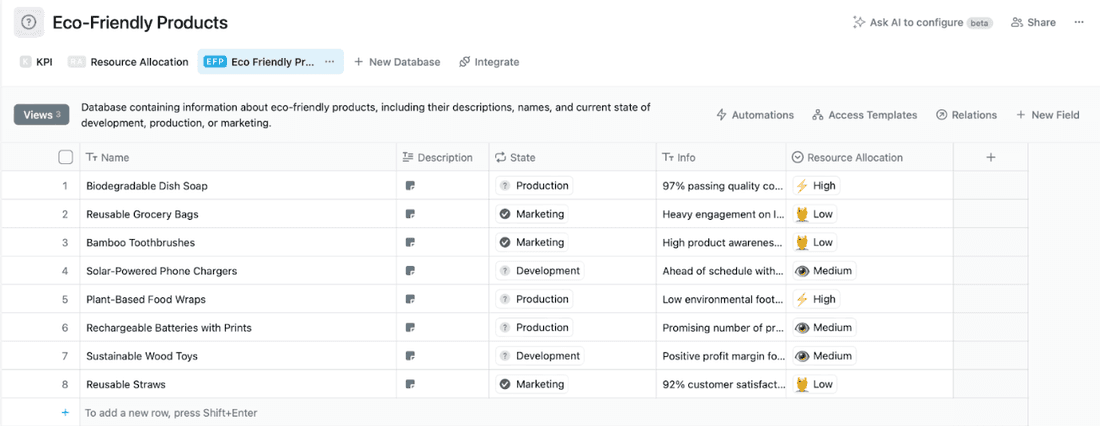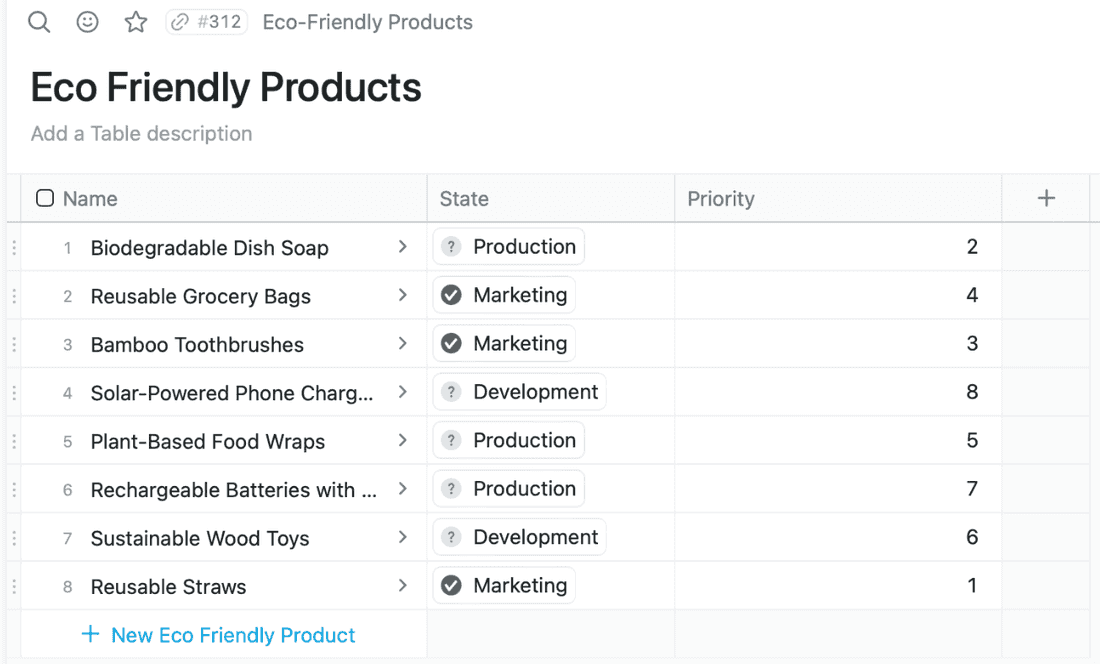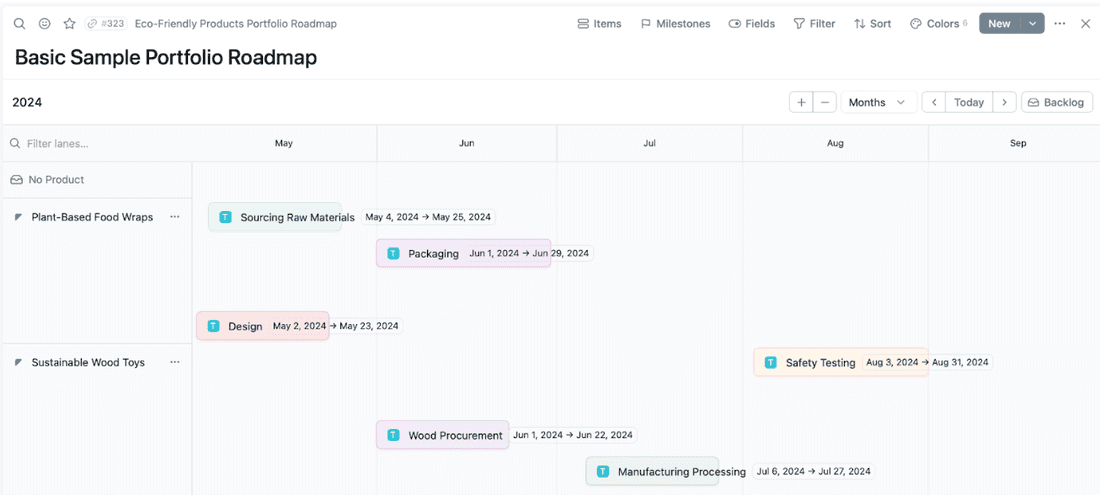Managing Your Product Universe with Portfolio Roadmaps
If you’re a product manager with a number of different tasks and projects going full force all at the same time, chances are you’re overwhelmed. You’ve got that eco-friendly food packaging solution ready to change the future of sustainability, and just around the corner is that solar-powered camping gear package that seems to demand more of your attention day after day. What do you do?
Take a deep breath, take a step back, and look at how a portfolio roadmap can manage all your products like a pro.
Get ready to find out:
- The inner workings and point of a product portfolio roadmap
- How you can create a clear portfolio roadmap in just a few easy steps
- And when it’s a good idea (and not a good idea) to use one
What is a Portfolio Roadmap?
If you were to hop onto a helicopter and each lot or space down on the ground was an entire product ecosystem, you can imagine the portfolio roadmap as being that aerial view of all of those products developing at once.
From that bird’s eye view, the little details of each individual ecosystem might be more difficult to pinpoint and understand, but those beautiful big-picture aspects become a lot clearer. It lets you see just how each product ecosystem coexists with the other and how they might interact and link. For each ecosystem, the portfolio roadmap will give you an idea of their status and progress and how resources and efforts are distributed across the entire land.
A Guide to Creating a Portfolio Roadmap
A portfolio roadmap will help you unite multiple roadmaps, providing a useful holistic view of your various products or projects.
Step 1 – Get Your Goals in Gear: As with any roadmap, your guiding light is your high-level strategic goals. Whether you’re focusing on one product or multiple, these goals are what keep everything in check. On a portfolio roadmap for an eco-friendly product company, those broad goals might revolve around promoting sustainability for consumers and leading the industry in green product development – so every product you create should strive to meet these objectives.
Step 2 – Inventory Your Products: With those objectives laid out in Step 1, you’ll ask yourself whether each product your company offers aligns with them or not. You’ll catalog each product and evaluate them on a one-on-one basis. Continuing on with our eco-friendly company example, they’d likely have a database of products, including biodegradable dish soap and bamboo toothbrushes. Each one of these products will include details like its current stage, relevant KPIs, and any other information relating to its alignment with the higher-level strategy.

Step 3 – Sort and Prioritize Your Products: Now, it’s time to classify and prioritize that list of product portfolio items. Looking at them all candidly, which products seem to align most closely with your high-level goals? To decide, you might consider their individual impact both on your profits and mission. Maybe the biodegradable dish soap is already generating a lot of excitement among the eco audience, or the straws are selling like hotcakes.

Step 4 – Outline the Journey for Each Product: Sketching out a portfolio roadmap means visualizing the journey of those products in the context of your company’s goals. Each stage of the product life cycle, like safety testing and sourcing raw materials, will go in a certain order across a timeline for each respective product. You could use color coding, symbols, and other ways of representing the checkpoints and milestones, but remember – this roadmap is about how each product harmonizes with the others.

Step 5 – Put Together a Visual Portfolio Roadmap: Having a pretty visual isn’t enough to complete your portfolio roadmap. To finish things off, you’ll add timing, dependencies, and resources for each product on your roadmap. Perhaps you want to complete your product development for those plant-based food wraps by Q2, start manufacturing them in Q3, and roll out a marketing strategy by the end of Q4. You might need additional resources or staffing, or if it’s part of an eco-friendly kitchen stuff collection, your biodegradable dish soap might be a dependency that needs to be taken care of first.

The Pros and Cons of Having a Portfolio Roadmap
No matter whether you’re just getting started as a product manager or are a seasoned pro looking to add another nifty tool to your arsenal, portfolio roadmaps are a serious asset. Like any tool, though, they’re not made for every scenario.
Want to know exactly what’s brewing in the company? The portfolio roadmap grants you that dashboard view that tells you how each project is doing and where it’s at in the process. It’ll tell you about any current and future demands so you can allocate resources and team member efforts to the right place. It’s not just a beneficial view for managers but also a more accessible sort of roadmap for all sorts of team members, stakeholders, and even end customers.
On the flip side, portfolio roadmaps completely ignore granularity, which means you’ll often need a complementary roadmap once you’re ready to dive into the finer details. Using a portfolio roadmap as a high-level planning tool is excellent for providing a quick overview of all your projects, but it won’t give you the intricacies behind each individual product. The roadmap might give you a succinct outline of your strategy plans, but it won’t tell you the specifics of how to get there.
The PM’s Hot Take
Product managers might frequently be tempted to just get into the weeds for every product all at once, but this drive can overshadow their ability to stir up meaningful dialogues and take a step back. Portfolio roadmaps let us reassess the big picture and spot things that granular daily tasks often eclipse. Instead of taking the “easy” route and focusing on immediate tasks, it’s more useful to shape the strategy and prioritize strategically. Maybe what you’re working on actually isn’t the most pressing task at the moment – and breaking free from that tunnel vision will help you see that.
Conclusion
With a constellation of products and initiatives, the expansive view of a portfolio roadmap is often just what we need. It’s like stepping out and looking at the entire glittering night sky rather than each star on its own.
Make every product in your universe thrive and find its place with smart, strategic planning using Fibery, where you can simplify complexity using intuitive, visual road mapping tools. Ready to transform the way you manage your products? Explore Fibery on a 14-day free trial. For more basics and deep cuts on product management, read more insights on our blog.
Psst... Wanna try Fibery? 👀
Infinitely flexible product discovery & development platform.